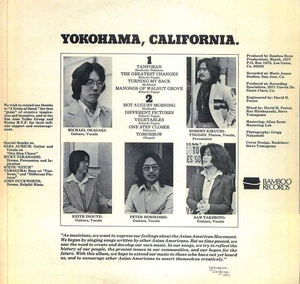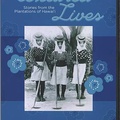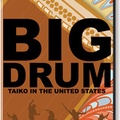Read Part 1 >>
About Some Songs
1. TANFORAN (Is anybody there?)
(Horikoshi and Takimoto)
This song begins with the sound of knocking at the former Tanforan Assembly Center, and narration. Although the center served as a temporary holding facility in San Bruno in the outskirts of San Francisco, it is now disappearing from people’s memories. TANFORAN was a standard song always played in YOKOHAMA, CALIFORNIA’s live performances. Even prior to the commencement of the redress movement, the song uses the word “home” to clearly express what the temporary holding facility was. The song says even after the facility was restored to a racetrack, “Early 1942 it was home for me.” What makes the song impressive is the clear expression of their intent to point out the mistake made by the government and their strong questioning attitude. The song is made even more impressive by powerful vocals by Sam Takimoto, a female singer, and overdubbed chorus. The phrase “Is anybody home?” is repeated in the song. The Tanforan Assembly Center has now become a shopping mall, with only a monument indicating the site of the temporary holding facility. Approximately 8,000 people once were confined in temporary shelters and stables.
2. TO THE MANONG OF WALNUT GROVE
(Robert Kikuchi-Yngojo)
This beautiful song was written by Kikuchi-Yngojo, born to a Japanese American mother and a Filipino American father. The song describes Walnut Grove, a rural area in the Sacramento Delta, where his manong (meaning “uncle”) used to live. Manong is an elderly Philippine man and often migrates to find a job. Featuring the history of Filipino American immigrants, this is a message song presenting a trace of his ancestors.
“Though time may change your people and hopefully we grow/ So we will not forget, we will not forget our people/ Our people in Walnut Grove.”
3. HOT AUGUST MORNING
(Peter Horikoshi)
In this song, the first track of the LP’s B side, a young Japanese American living in Berkeley, a place with a nice cool climate, experiences a “hot August morning” in Fresno, an agricultural area in California’s Central Valley. He also greets such a morning in Livermore. Moving from Fresno to Livermore stirs “a strange feeling,” reminding him of Hiroshima and Nagasaki. This song is like “a film of mobility” created by Asian Americans who are “continuously moving” (Prof. Darrell Y. Hamamoto at UC Davis). A Japanese journalist Ryusuke Kawai argues that the group members resided in the U.S. but embraced Japan internally, which made it possible to create this song. (Weekly Sunday Mainichi, October 31, 2010). It can be said that this song is for third-generation Japanese Americans, who are seldom aware of Japan in their daily life, to recognize that they are Japanese Americans, based on the overwhelming historical fact of Hiroshima and Nagasaki, as well as on the radiation laboratory in Livermore where atomic weapons 100 times more powerful than the Hiroshima type are stored. As a result, this song holds a poignancy for Japanese people that they would not expect. The narration in the first half of the song (which begins with narration, as does the first track of side A) and the phrase “Check the skies for B-29’s that would not come today” are very powerful. The beautiful voicing of the chorus successfully depicts the memory of that Hot August Morning in Hiroshima in California. In fact, this song was not created for the album; even before it was recorded for the album, it had been played often in the group’s live performances (according to Horikoshi).
*Fresno Jap: “I just used it as an “insider’s” reference to “my” people.” (Horikoshi)
4. DIFFERENT PICTURES
(Robert Kikuchi-Yngojo)
Now that there is no choice but to admit the limits of multiculturalism and identity politics, as well as the change in the society of Asian Americans and their awareness, the lyrics of this song are certainly old-fashioned. However, nobody can deny the poignancy felt in those days. Suggesting that “I should draw my portrait and you should draw your own,” Kikuchi-Yngojo criticizes the stereotype. Born to a Japanese American mother and a Filipino American father, he fully demonstrates his unique talent in this album. Subsequently, he began to pursue Kulintang music, a folk music passed down to Muslims in the Philippines, and played together with Yoshitaka Terada (a professor of folk music, at the National Museum of Ethnology, Osaka, Japan). Today, Yngojo, an excellent narrator/actor, gives story-telling performances in the duo Eth-Noh-Tec, based in San Francisco.
5. ONE STEP CLOSER
(Sam Takimoto)
In those days, Asian American movement activists made active efforts to resolve the false accusation case of Chol Soo Lee, the immigrant from Korea sentenced to imprisonment for life on a charge of murder in the early 1970s. This song was created to support such efforts. Mutual interaction and understanding are as difficult today as they were in the 1970s. Accompanied by excellent guitar work that reminds audiences of Crosby, Stills, Nash & Young, and by a guest vocalist, Sam Takimoto says in the song that “One step closer to you is one step closer to me,” insisting that mutual understanding makes “the change possible.”
Assessment and Contemporary Significance:
As indicated in the record jacket, this album is a record about the Asian American movement, an unknown history, current problems, and future hopes. The message is very clear. Although all the members have Japanese ancestry, only two songs in the album – TANFORAN and HOT AUGUST MORNING - are strongly linked to the fact that the members are Japanese Americans, and the album includes a wide variety of songs. Clearly the lyrics of some songs are somewhat childish and over-explanatory, but it could be said to be unsophisticated to criticize any immaturity. Compared with A Grain Of Sand (1973), which powerfully conveys the themes of Yellow Power, unity with the Third World, and social change through revolution, YOKOHAMA, CALIFORNIA is community-oriented and introspective. Additionally, the album reveals the group’s intention not only to seek and affirm their identity, but also to deliver their message even outside the Asian American community. The album is a symbol of Asian American identity as of 1977; the creation of such a symbol was possible only by folk songs serving as songs of a community. At the same time, through comparison with works by amateur Asian American musicians currently available on the Internet, the album serves as a clue to consideration of the self-representation of Asian Americans and also “the desire to disguise oneself as another person” (Toshiyuki Owada) in American music. While YOKOHAMA, CALIFORNIA was created in the midst of the Asian American movement, it is important not to trivialize the work as just protest songs, but to regard it as Asian American narrative.
Acknowledgement:
I would like to extend my sincere appreciation to Mr. Peter Horikoshi, Ms. Sam Takimoto, Mr. Robert Kikuchi-Yngojo, Mr. Keith Inouye, Mr. Steve Yamaguma, Mr. Philip Kan Gotanda, Ms. P.J. Hirabayashi, and Mr. Francis Wong, who provided me with comments regarding their activities in those days and the background of the songs to help me create this presentation, as well as Mr. Shin Miyata (MUSIC CAMP, INC.), who “rediscovered” the LP record in Tokyo, Mr. Ryusuke Kawai, who wrote about the album in his Sunday Mainichi column, and Ms. Yoko Nishimura, who reprinted the magazine article in the web site of Discover Nikkei.
© 2012 Minoru Kanda






